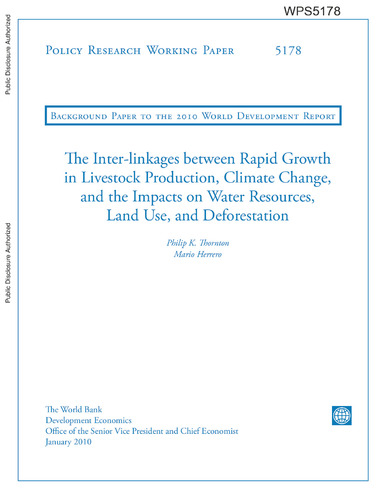The inter-linkages between rapid growth in livestock production, climate change, and the impacts on water resources, land use, and deforestation
Abstract
Livestock systems globally are changing rapidly in response to human population growth, urbanization, and growing incomes. This paper discusses the linkages between burgeoning demand for livestock products, growth in livestock production, and the impacts this may have on natural resources, and how these may both affect and be affected by climate change in the coming decades. Water and land scarcity will increasingly have the potential to constrain food production growth, with adverse impacts on food security and human well-being. Climate change will exacerbate many of these trends, with direct effects on agricultural yields, water availability, and production risk. In the transition to a carbon-constrained economy, livestock systems will have a key role to play in mitigating future emissions. At the same time, appropriate pricing of greenhouse gas emissions will modify livestock production costs and patterns. Health and ethical considerations can also be expected to play an increasing role in modifying consumption patterns of livestock products, particularly in more developed countries. Livestock systems are heterogeneous, and a highly differentiated approach needs to be taken to assessing impacts and options, particularly as they affect the resource-poor and those vulnerable to global change. Development of comprehensive frameworks that can be used for assessing impacts and analyzing trade-offs at both local and regional levels is needed for identifying and targeting production practices and policies that are locally appropriate and can contribute to environmental sustainability, poverty alleviation, and economic development.

